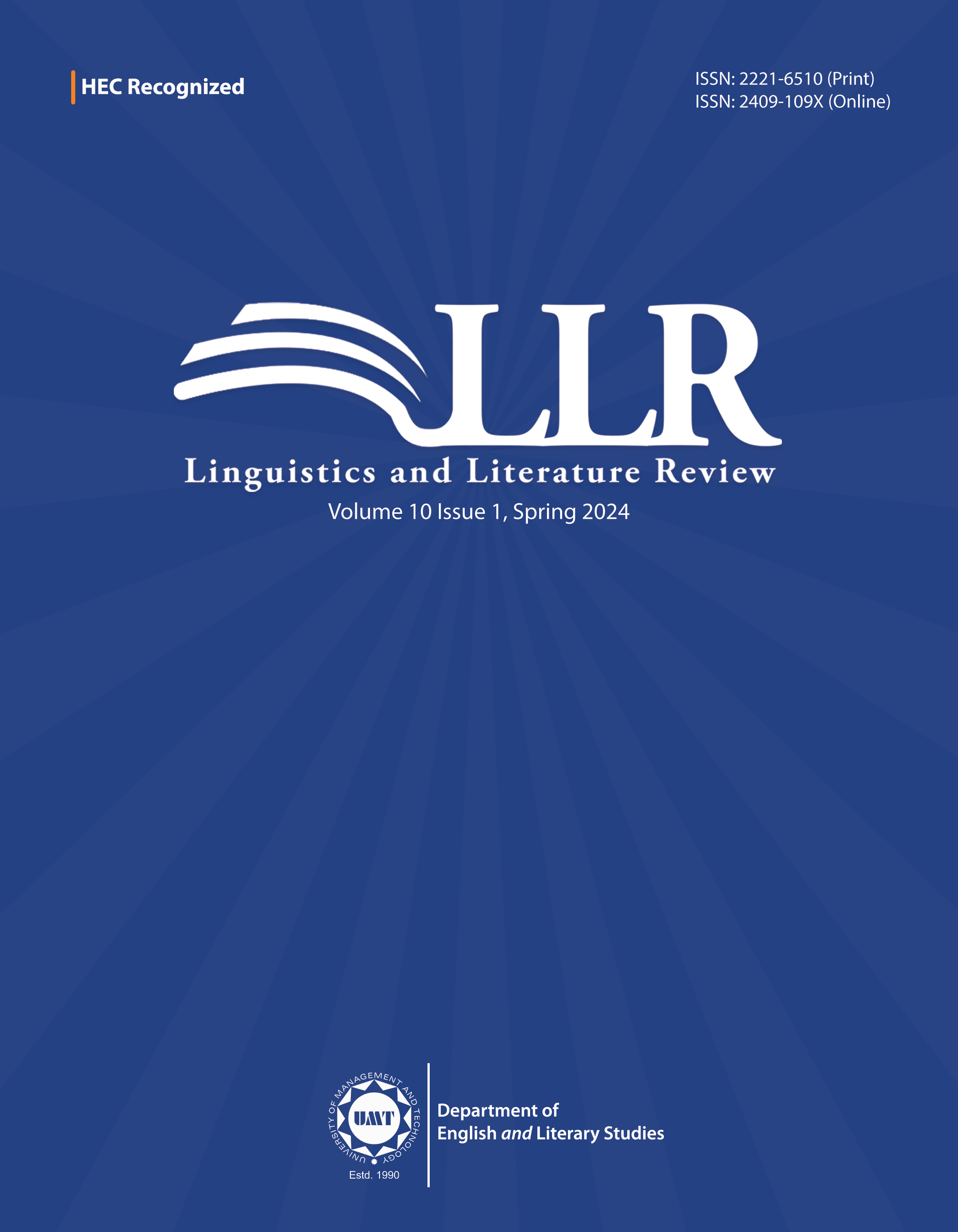Historicising the Anatomy of the Ghost’s Passions and its Religious Identity in Hamlet
Abstract
 Abstract Views: 0
Abstract Views: 0
In the early modern period, the appearance of ghosts carried both religious and pathological connotations in the wake of the twin movements of the Reformation and the Renaissance. According to this belief system, the supernatural was seen as a factor in creating an imbalance in bodily humours, including the black bile, thus resulting in a melancholic disposition. Based on contextual and historical data, this article historicises the religious and pathological identity of the Ghost in Hamlet, which reflects the early modern understanding of the supernatural. This study is separate from existing discussions that focus solely on the role of the Ghost in the play. However, the very nature of the Ghost, a great driving force behind the plot thrust, as understood by Shakespeare and his society, has been fairly neglected. This study, therefore, situates three distinctive aspects of the Ghost in early modern society, warranting attention in Shakespearean criticism. Firstly, the findings of this study underscore the nuanced religious persona of the ghost, encompassing both Protestant and Catholic perspectives, as understood in the early modern period. Secondly, its pathological and melancholic nature is discussed which finds its origins in the theory of humours. This aspect of the Ghost is strongly linked to creating an imbalance in Hamlet’s melancholic humour and driving events to their tragic end in the play. Thirdly, it examines Shakespeare’s exploration of the mind-body discourse through the Ghost’s interactions with the Prince, reflecting the intellectual currents of the seventeenth century. Moreover, as the Ghost belongs to the past, this fact connects the appearance of the Ghost with the idea of the history of the passions—a still-burgeoning field of study in the humanities.
Downloads
References
Babb, L. (1951). The Elizabethan Malady: A study of Melancholia in English literature from 1580 to 1642. Michigan State College Press.
Belsey, C. (2010). Shakespeare’s sad tale for winter: Hamlet and the tradition of fireside ghost stories. Shakespeare Quarterly, 61(1), 1–27. https://doi.org/10.1353/shq.0.0136
Berrios, G. (2016). The anatomy of melancholy by Robert Burton. The British Journal of Psychiatry, 208(5), 428–428. https://doi.org/10.1192/bjp.bp.113.138156
Bradwell, S. (1636). Physick for the sicknesse. Benjamin Fisher
Bright, T. (1586). A treatise of melancholie. Thomas Vautrollier.
Burton, R. (1621). The anatomy of melancholy. Iohn Lichfield and Iames Short.
Elyot, T. (1539). The castel of helthe. ædibus Thomæ Bertheleti Typis Impress.
James, I. (1597). Daemonologie in forme of a dialogue, diuided into three bookes. Robert Walde-graue.
Lauaterus, L. (1572). Of ghostes and spirites walking by nyght and of strange noyses, crackes, and sundry forewarnynges, whiche commonly happen before the death of menne, great slaughters, [and] alterations of kyngdomes. One booke, written by Lewes Lauaterus of Tigurine. And translated into Englyshe by R.H. Henry Benneyman for Richard VVatkyns.
Perkins, W. (1608). A discourse of the damned art of witchcraft. Centrel Legge.
Schmidt, J. (2007). Melancholy and the care of the soul: Religion, moral philosophy and madness in early modern England. Ashgate.
Scot, R. (1584). The discouerie of witchcraft. Henry Denham.
Scot, R. (1651). Scot’s discovery of witchcraft. R.C.
Shakespeare, W. (2017a). Hamlet. In G. Taylor, J. Jowett, T. Bourus & G. Egan (Eds.), The new Oxford Shakespeare: Modern critical edition (pp. 1993–2100). Oxford University Press.
Shakespeare, W. (2017b). Julius Caesar. In G. Taylor, J. Jowett, T. Bourus & G. Egan (Eds.), The new oxford Shakespeare: Modern critical edition (pp. 2501–66). Oxford University Press.
Shakespeare, W. (2017c). The Winter’s Tale. In G. Taylor, J. Jowett, T. Bourus & G. Egan (Eds.), The new Oxford Shakespeare: Modern critical edition (pp. 2893–2975). Oxford University Press.
Siegel, P. (1963). Discerning the Ghost in Hamlet. PMLA: Publications of the Modern Language Association of America, 78(1), 148–149. https://doi.org/10.2307/461236
Slater, M. (2016). The ghost in the machine: Emotion and mind–body union in Hamlet and descartes. Criticism, 58(4), 593–620. https://doi.org/10.13110/criticism.58.4.0593
Smith, W. D. (2024). Hippocrates: Greek physician. Britannica. https://www.britannica.com/biography/Hippocrates
Swannack, F. (2008). Melancholy and the care of the soul: Religion, moral philosophy and madness in early modern England. Parergon, 25(1), 250–252. https://doi.org/10.1353/pgn.0.0042
Wood, D. H. (2002). ‘He something seems unsettled’: Melancholy, jealousy, and subjective temporality in ‘The Winter's Tale’. Renaissance Drama, 31, 185–213.
Wright, T. (1604). The passions of the minde in general. Valentine Simmes for Walter Burre.
Copyright (c) 2024 Naseer Ahmed

This work is licensed under a Creative Commons Attribution 4.0 International License.

This work is licensed under a Creative Commons Attribution 4.0 International License. Authors retain copyright and grant the journal right of first publication with the work simultaneously licensed under a Creative Commons Attribution (CC-BY) 4.0 License that allows others to share the work with an acknowledgment of the work’s authorship and initial publication in this journal.







